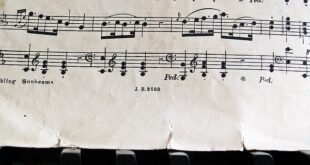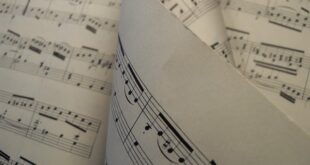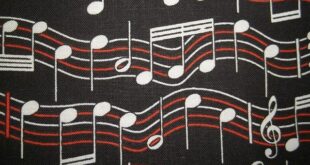Silences have a purpose in music – they help to distinguish different sections of the score, they allow listeners to shift their attention from one syntactic unit to the next (Knösche et al., 2004), and they help us lay down memory for the tune (Deutsch, 1980).
What Is a Rest in Music?
In music theory, a rest is a period of time during which a performer does not play a note on their instrument. Music pauses may be found in many forms of music, and they contribute to memorable melodies and rhythms. When it comes to the rhythm or groove of a piece of music, it is based not only on the notes that a musician plays, but also on the moments when the artist is not playing anything at all. The back-and-forth pattern of notes and pauses allows for rhythmic phrasing, and entire works of music arise from these melodic phrases.
In musical notation, a rest is a sign that indicates the absence of a sound. Each rest symbol and name correspond with a particular note value, indicating how long the silence should last, generally as a multiplier of a measure or whole note. Rests are intervals of silence in pieces of music, marked by symbols indicating the length of the pause.
Tacets
Tacet is Latin word for “(it) is silent” (pronounced: /test/, /tst/, or /tkt/). (From a rather literal point of view)
It is a musical phrase for when an instrument or voice does not make a sound, often known as a rest. It usually denotes a lengthy period of time, usually a full movement, in vocal polyphony and orchestral compositions. Tacet is used to denote much shorter pauses in more current music, such as jazz.
Multirests, also known as multiple-measure rests, are rests that last for several measures (or multiple rests, each of which lasts an entire measure).
Early symphonies frequently left off the brass or percussion in certain sections, particularly slow (second) movements, and this is the command given in the parts for the performer to wait until the end of the movement.
It is also often used in accompanying music to indicate that an instrument does not perform on a certain run through a section of music, such as “Tacet 1st time.” The term tacet al fine denotes that the performer should remain quiet for the rest of the piece (or portion thereof) and should not, for example, count rests.
When a certain instrument/voice/section “is to rest for a full section, movement, or composition,” Tacet may be appropriate.
Of course, partial rests must always be written in. Despite the fact that it means ‘silent,’ the term tacet…is not a good substitute for a long pause inside a movement.
As a result, the term tacet should only be used to describe a player who rests throughout a full movement.
The abbreviation “N.C.” (“no chord”) is frequently used in guitar tablature or chord charts to denote tacets, pauses, or caesuras in the accompaniment.
These rests are divided (broadly) into 8 main types.
Whole note rest
This symbol, also known as a full rest or a semibreve rest, signifies a musical pause the duration of a whole note. A complete rest in a 4/4-time signature instructs the player to pause for the whole bar. A full rest is located directly below the fourth line on a five-line musical staff.
Half note rests
Also called a half rest or minim rest, this rest covers half of an entire bar of 4/4. It is one half the length of a whole rest. On a five-line musical staff, a half rest hovers just above the middle line.
Quarter note rest
A quarter note rest, also called a crotchet rest, covers the duration of a quarter note. A quarter rest symbol looks unlike any other rest in music notation.
Eighth note rest
An eighth rest corresponds to an eighth note in length. It is the first of several rests that look quite similar to one another in their musical notation.
Sixteenth note rest
A sixteenth rest, sometimes known as a semiquaver rest, is identical to an eighth rest but with one more embellishment. It lasts for the duration of a sixteenth note.
Thirty-second note rest
The pattern of the eighth and sixteenth rests is followed by a thirty-second respite. It lasts the length of a thirty-second note. Pauses may become much shorter from here—the next shortest would be a sixty-fourth note rest—but rather than filling up their sheet music with ever-shorter rests, most composers just double their speed, which cuts the duration of notes and rests in half.
Dotted rests
Any rest followed by a dot lasts one and a half times as long as an un-dotted rest. A dotted quarter rest, for example, would last as long as one and a half quarter rests. This duration can alternatively be thought of as one-quarter rest plus one additional eighth rest. A dotted whole rest can also be used to produce a whole measure rest for a 6/4 bar.
Rests with a fermata
If you see a rest with a fermata sign over it, it implies that the length of the rest is entirely up to you. You can play it precisely as written, or you can stretch out the remainder for added effect. Fermatas are usually often found at the conclusion of a measure, just before a double bar line.
“The notes I handle no better than many pianists. But the pauses between the notes – ah, that is where the art resides” (p.485, a quote from Artur Schnabel)
As an aside, I believe this is a musical device that is frequently utilised in thriller and horror music. For one thing, I find a sudden break in music that appears unfinished to be quite unsettling…behind he’s you!
So, the next time you hear a pause in music, consider it for more than just an auditory bookmark. A competent composer would deliberately position a pause to influence the audience in many ways, and a skilled performer will embrace silence, utilising it as a point of expression for a spectrum of emotions ranging from longing to rage, terror to tranquilly. I, for one, will never again underestimate the melodic beauty of stillness.
 The Occasional Orchestra Learn About Everything Music!
The Occasional Orchestra Learn About Everything Music!



